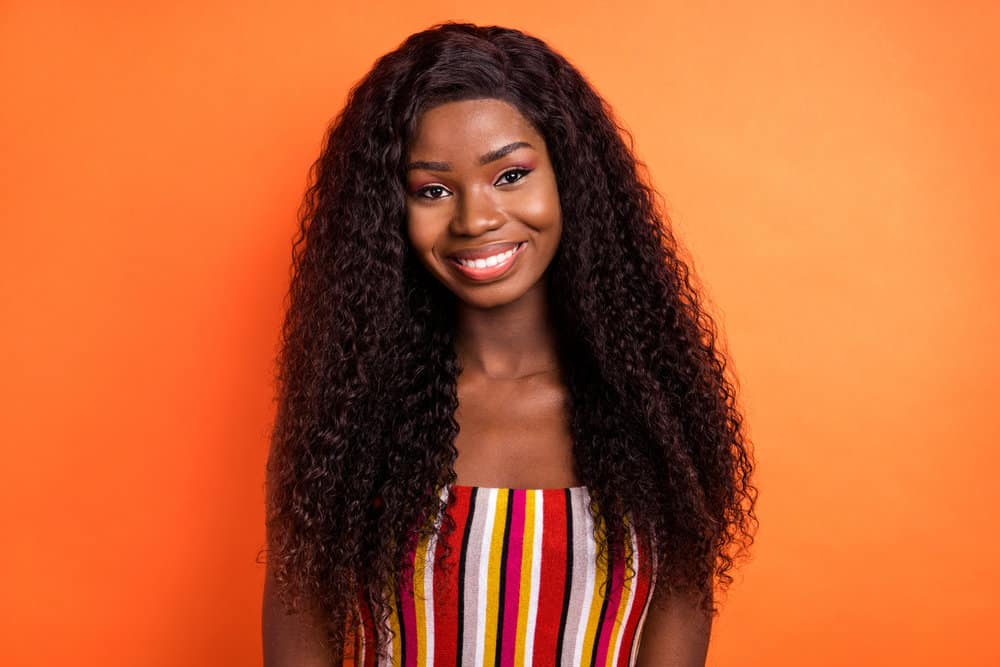
If you're a new wig wearer, the first thing you need to understand is density greatly affects the overall look and feel of your wig. You may have heard through the grapevine that 150% density is or isn't good for a wig.
In this article, we'll explain how density affects a wig and whether 150% is a good option. Let's get right into it!
Table of Contents
- 1 What Is Wig Density?
- 2 What Is 150% Density?
- 3 Is 150% Density Good for a Wig?
- 4 How to Know if 150% Density Wigs Is Your Ideal Density
- 5 Benefits of 150% Wigs
- 6 Drawbacks of 150% Wigs
- 7 When to Go with a 130% Wig over a 150% Wig
- 8 When to Go with a 180% Wig over a 150% Wig?
- 9 Things to Consider Before Choosing a Wig of Any Density
- 9.1 What Does a 150% Density 4x4 Wig Mean?
- 9.2 What Does a 150% Density 13x4 Wig Mean?
- 9.3 What Does a 150% Density 13x6 Wig Mean?
- 9.4 Is a 150% Density Wig Full?
- 9.5 Is 150% Density Good for a Straight Wig?
- 9.6 Is 150% Density Good for Curly Wig?
- 9.7 Should I Get 150% or 180% Density Wig?
- 9.8 Related Articles
Before we can answer the question of whether 150% density is good for a wig, we need to ensure you know what density actually means.
What Is Wig Density?
In short, wig density refers to the amount of hair that is used on a wig cap. In general, wig densities range from 60% to 250%. The higher the density, the thicker and fuller your wig will be.
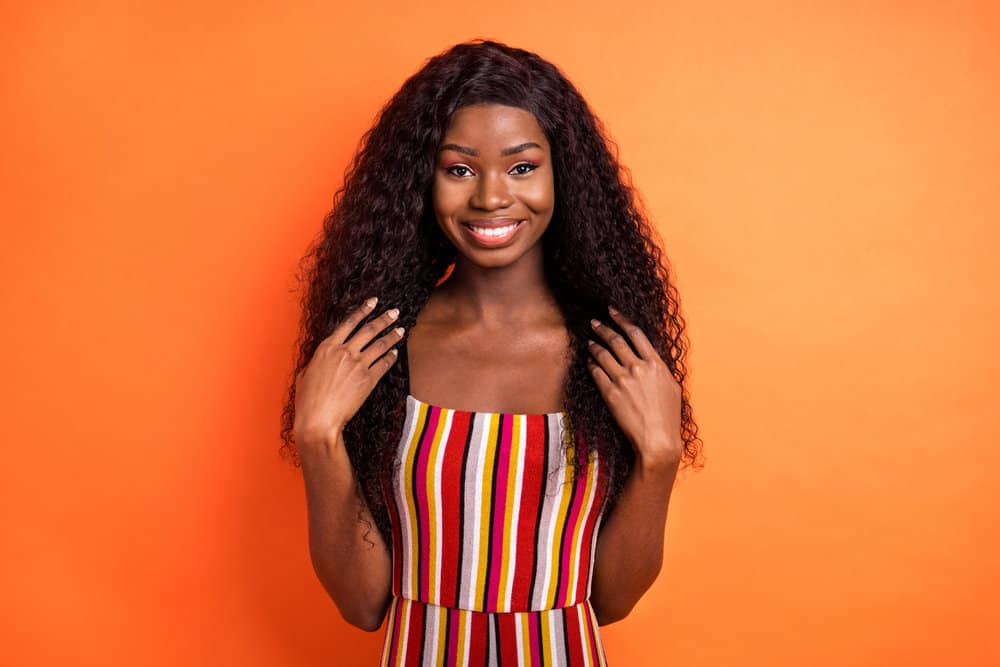
What Is 150% Density?
150% density wigs are considered to be natural-looking wigs with a little more fullness than the average head of human hair. They are on the thicker side but not so thick that they become too heavy or bulky.
150% density wigs are a great choice for those who want a moderately full yet lightweight wig. To help put things in perspective, 150% wigs are one step up from 130% density (one of the most natural wig densities in existence).
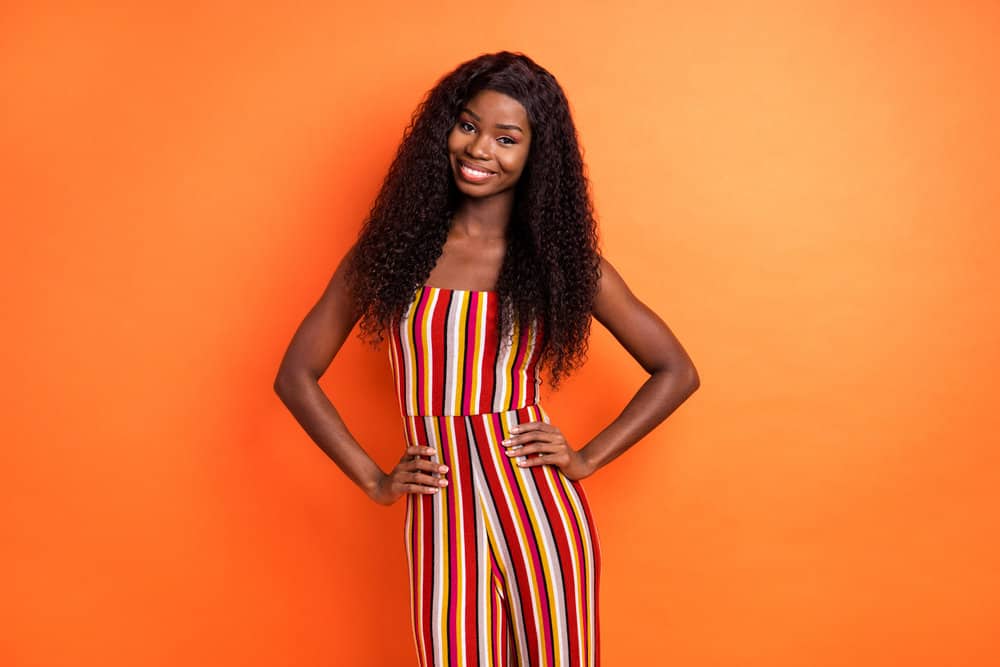
Is 150% Density Good for a Wig?
150% density is good for a wig, though it may not work for everyone. A good candidate for a 150% density wig usually wants a full wig without being over the top.
But things are just a little more complicated than that, as 150% density wigs don’t work for everyone. People with naturally thin or sparse hair may find 150% density too thick, while those with thick, full hair might prefer something even thicker.
In addition, those who want bombshell curls or Hollywood-esque volume should go for something higher than 150%, such as 180%, 200%, or 250% density.
As you might have gathered by this point, the answer to whether 150% density is good for a wig depends entirely on the wearer's preferences and sometimes their natural hair type.
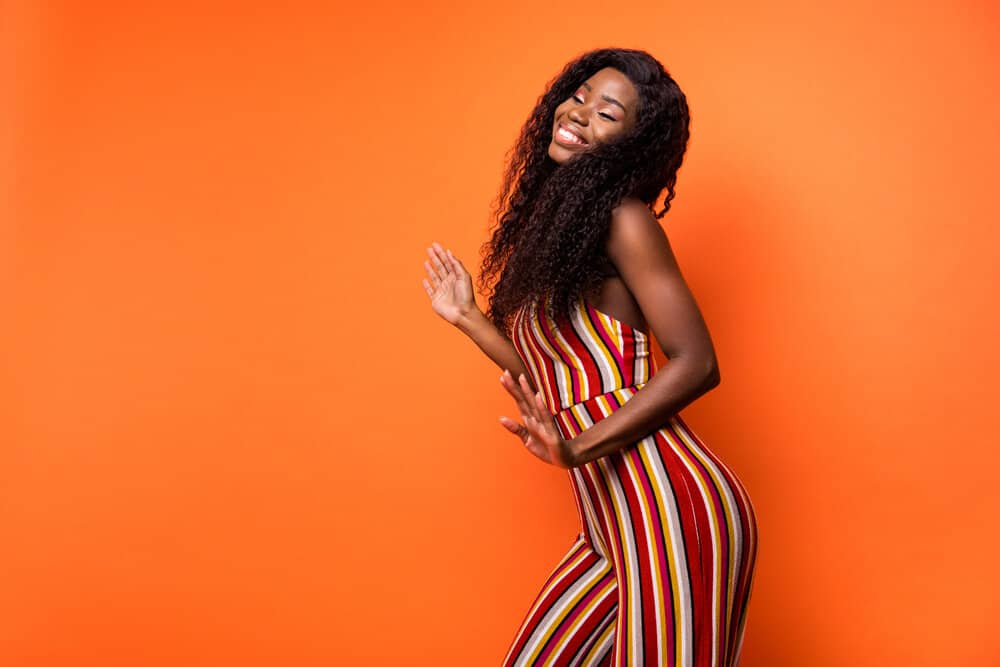
How to Know if 150% Density Wigs Is Your Ideal Density
To know if 150% density is good for you, we suggest experimenting with 150% density wigs in several textures to see if the density works for you. That's the only way to make an informed decision.
If 150% is too thick, try 130% or even 120%. If it's too thin, opt for 180%, 200%, or 250% density. It may take a few tries to find the perfect density for you, but it's worth it in the end!
If you're still unsure what density is best for you, we suggest visiting a wig specialist or stylist. They will have the expertise to help you find the perfect density for your needs.

Benefits of 150% Wigs
Before you choose a wig with 150% density, it's important to understand the benefits that come with this type of wig. Below, we'll get into the main benefits of wig density:
- Natural-looking wig with a little more fullness than the average head of human hair
- Not too thick or bulky, which makes it lightweight
- Moderately full and looks natural without being over the top
- Good for those who want a wig that's not too heavy or overly voluminous
- Easier to style than thicker wigs
- Gives off an airy, natural look due to its light density
- Affordable option compared to higher densities such as 180%, 200%, or 250%
- Ideal density for people with naturally thin or sparse hair
With so many advantages, it's easy to see why many opt for this wig density!

Drawbacks of 150% Wigs
You may be tempted to choose a 150% wig after reading about the above benefits. But just like any other wig, 150% density wigs have their own set of drawbacks.
Before purchasing a wig with this type of density, it's important to understand the potential drawbacks, including:
- Not ideal for those who want bombshell curls or Hollywood-esque volume
- May not work for those with naturally full and voluminous hair. It may be too much of an adjustment.
- Can look too thick on people who don't have high-density or thick hair.
Now that you know the benefits and drawbacks of 150% density wigs, you can make an informed decision when it comes to purchasing a wig with this type of density. Only go for this wig if you feel that the benefits of the wig outweigh the drawbacks.
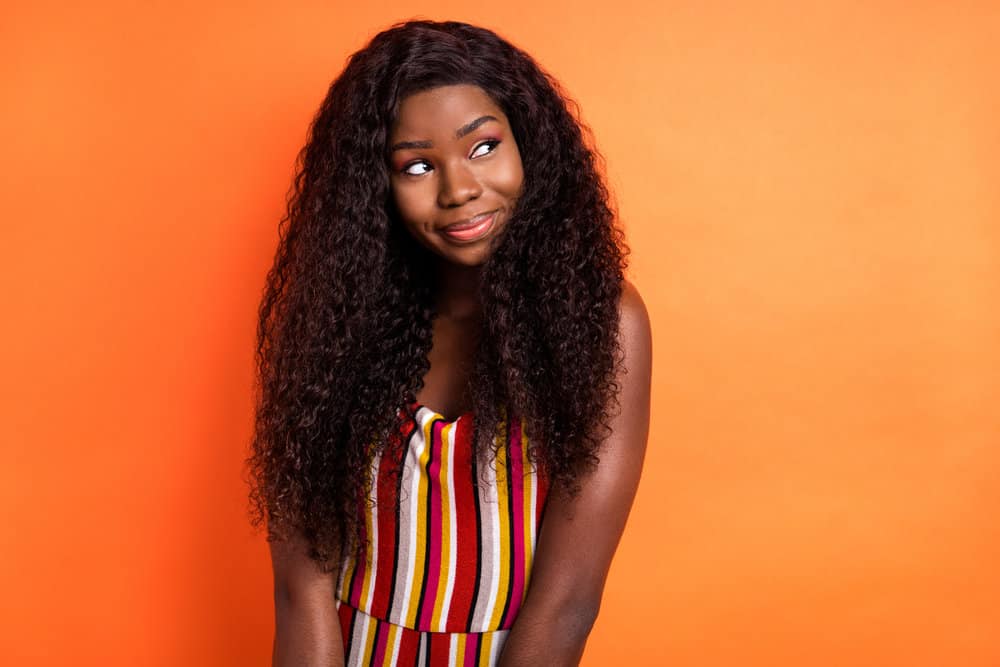
When to Go with a 130% Wig over a 150% Wig
For anyone who's on the fence between 130 and 150% density, here's a little bit of assistance. 130% wigs are ideal for those favoring a natural look over everything else and preferring a lightweight wig-wearing experience.
Those with naturally thin or sparse hair will find 130% density much more comfortable and wearable. It can be difficult to go from thin or sparse hair to a fuller 150% density wig.
A 150% density wig can still work for those who want a natural look but will be noticeably thicker than what's considered normal. Choose a 150% wig if that little bit of extra thickness is important to you.
When to Go with a 180% Wig over a 150% Wig?
A 180% wig could be a better choice for you than a 150% wig if you're looking for more volume or thickness and want to achieve grand and glamorous hairstyles.
180% density wigs give you a ton of volume and lift. But that's not all! They’re great for people with naturally thick or voluminous hair because, in this case, that's what the wearer will be used to.

Things to Consider Before Choosing a Wig of Any Density
Your ideal wig density depends on various factors, including your natural hair density, the wig's texture, how long you want the wig to be, and your hairstyle preferences.
Here's a little more information to help you make the right choice:
- Consider your natural hair density - Will you be wearing all of your natural hair underneath the wig? If so, you'll want to get a wig density closest to your own hair. If your hair is super thick and you put a thick wig on top of it, the cap could look bulky and throw off the entire look.
- Take into account the texture of the wig - Different textures can affect how a wig looks on your head. The curlier the wig, the fuller it will look. On the other hand, straight wigs tend to be thinner and sleeker. Keep that in mind when shopping for your wig.
- Think about the length of the wig - If you want a long wig, you may want to choose the higher density. Longer wigs with a lower density may not look as full and voluminous as you'd like. It's the reverse for shorter wigs; shorter wigs with a higher density may appear too thick and heavy.
- Consider your hairstyle preferences - If you want to achieve big and bold hairstyles, then you'll likely want to go with a higher density. If you're going for more natural and subtle hairstyles, opt for a lower density.
What Does a 150% Density 4x4 Wig Mean?
A 150-density 4x4 wig means that the wig has a density of 150% and a lace closure size of 4x4 inches. A lace closure is a piece of lace used to create a natural-looking part. A 4x4 closure is a smaller size and is typically used for wigs that have a middle part or a side part.
What Does a 150% Density 13x4 Wig Mean?
A 150-density 13x4 wig means that the wig has a density of 150% and a lace frontal size of 13x4 inches. A lace frontal is similar to a lace closure but covers the entire front of the wig from ear to ear. A 13x4 frontal is a medium size for wigs with a middle part or a side part.
What Does a 150% Density 13x6 Wig Mean?
A 150-density 13x6 wig means that the wig has a density of 150% and a lace frontal size of 13x6 inches. A 13x6 lace frontal is a larger size. Because of this, it's most often used for wigs that have a deep side part or a center part.
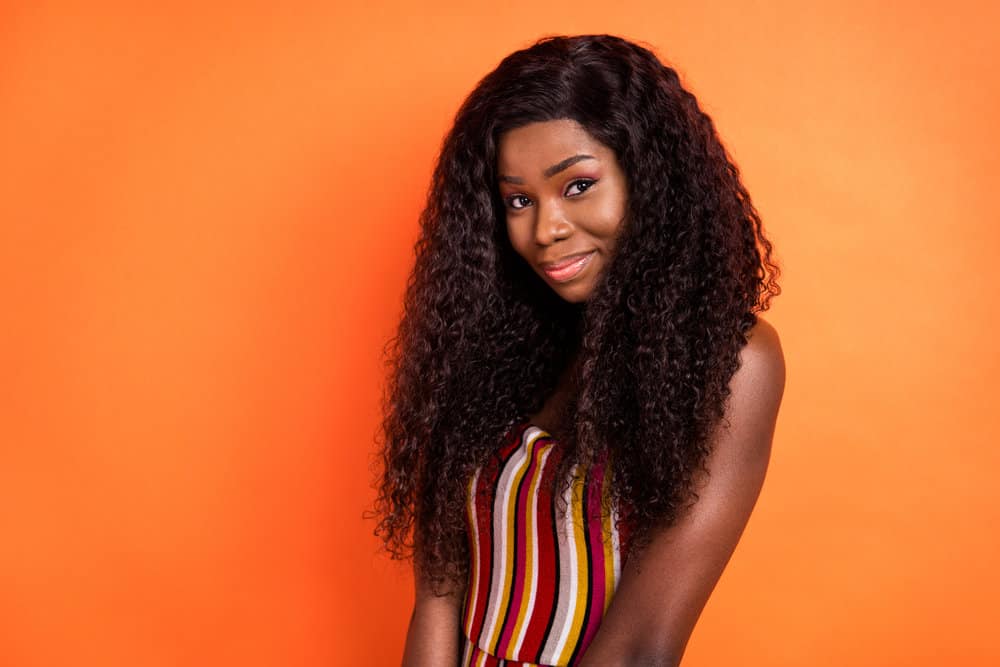
Is a 150% Density Wig Full?
Whether a 150-density wig is considered full or not depends on the look you want. Some people may find that a 150% density wig is full enough, while others prefer a higher density for a more voluminous look. Generally, a 150% density wig can provide a full appearance, especially if it's a shorter style or has a curly texture.
Is 150% Density Good for a Straight Wig?
If you're looking for a natural-looking straight wig, then a 150% density can provide just the right amount of volume without looking bulky. However, if you want it very sleek and flat, a lower density, like 130%, might be better. If you want a long straight wig, a higher density, like 180%, will give it more fullness and body.
Is 150% Density Good for Curly Wig?
A 150% density can be a great option for a curly wig, especially if you want a natural-looking fullness and volume. Curly wigs typically require a bit more density than straight wigs to prevent the curls from looking limp or flat. Also, tight curls and coils need even more density to maintain their shape and definition.
Should I Get 150% or 180% Density Wig?
180-density wigs provide more volume and fullness, while 150-density wigs have a more natural look. It's important to consider factors like the size and style of the wig, as well as your budget and the amount of maintenance you're willing to do when choosing a wig density.
- What Does Wig Density Mean?
- 150 Density Wig vs. 180 Density Wig
- 130 Hair Density vs. 150
- Best Human Hair Wigs Online
So, there you have it–everything you need to know about 150% density wigs, whether this density is a good choice, and tips to help you choose a wig.
We hope you found this guide useful and that it helps you make the best decision when choosing your next unit. We wish you the best of luck!




